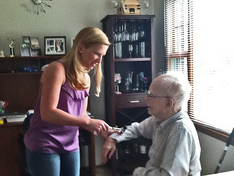- Home
- About Us
- TSPT Academy
- Online Courses
-
Resources
- Newsletter
- Business Minded Sports Physio Podcast
- Day in the Life of a Sports PT
- Residency Corner
-
Special Tests
>
-
Cervical Spine
>
- Alar Ligament Test
- Bakody's Sign
- Cervical Distraction Test
- Cervical Rotation Lateral Flexion Test
- Craniocervical Flexion Test (CCFT)
- Deep Neck Flexor Endurance Test
- Posterior-Anterior Segmental Mobility
- Segmental Mobility
- Sharp-Purser Test
- Spurling's Maneuver
- Transverse Ligament Test
- ULNT - Median
- ULNT - Radial
- ULNT - Ulnar
- Vertebral Artery Test
- Thoracic Spine >
-
Lumbar Spine/Sacroiliac Joint
>
- Active Sit-Up Test
- Alternate Gillet Test
- Crossed Straight Leg Raise Test
- Extensor Endurance Test
- FABER Test
- Fortin's Sign
- Gaenslen Test
- Gillet Test
- Gower's Sign
- Lumbar Quadrant Test
- POSH Test
- Posteroanterior Mobility
- Prone Knee Bend Test
- Prone Instability Test
- Resisted Abduction Test
- Sacral Clearing Test
- Seated Forward Flexion Test
- SIJ Compression/Distraction Test
- Slump Test
- Sphinx Test
- Spine Rotators & Multifidus Test
- Squish Test
- Standing Forward Flexion Test
- Straight Leg Raise Test
- Supine to Long Sit Test
-
Shoulder
>
- Active Compression Test
- Anterior Apprehension
- Biceps Load Test II
- Drop Arm Sign
- External Rotation Lag Sign
- Hawkins-Kennedy Impingement Sign
- Horizontal Adduction Test
- Internal Rotation Lag Sign
- Jobe Test
- Ludington's Test
- Neer Test
- Painful Arc Sign
- Pronated Load Test
- Resisted Supination External Rotation Test
- Speed's Test
- Posterior Apprehension
- Sulcus Sign
- Thoracic Outlet Tests >
- Yergason's Test
- Elbow >
- Wrist/Hand >
- Hip >
- Knee >
- Foot/Ankle >
-
Cervical Spine
>
- I want Financial Freedom
- I want Professional Growth
- I want Clinical Mastery
 Last week in our OPTIM online mentoring session, the question was asked about how to provide great care while managing 2-4 patients at a time. If you see a high volume of patients per day, is it possible to practice evidenced based medicine? If so, what are some implementable strategies to managing multiple patients?  The quick answer is 'Yes.' It is possible to be busy and effective at the same time.' With that said, succeeding in this environment is difficult and often leads to professional burnout. In order to succeed in a busy clinic, you must be efficient in your history and examination. Efficiency is recognizing patient movement and behavior patterns and minimizing your objective testing according to these patterns. There is no time for irrelevant tests and measure. The clinician should only perform pertinent positive and negative tests. For example, if you treat an individual with a history of non-specific mechanical back pain for the past 10 years, the physical examination will not point to one specific structure. From a musculoskeletal standpoint, all structures have healed. The patient now has chronic pain with central sensitization. A more general strengthening and conditioning program may be more appropriate early in the plan of care. Additionally, choosing how to classify patients should come from the intake paperwork and subjective history. You should gather ~80% of the information during this portion of the evaluation. A second strategy for success in a busy clinic is SIMPLIFYING your treatment plan. Dana Tew, OPTIM president, often relates various PT diagnosis' to treating the common cold. When you go to your PCP for the common cold, do you want a new, innovative treatment OR do you want the gold standard for treating a common cold? The answer is simple, the gold standard. For example If a patient presents with low back pain with mobility deficits, they likely need a lumbar manipulation followed by mobility exercises and hip strengthening. There are high levels of evidence to support manipulation for acute low back pain, but many PT's are still not performing these techniques. In addition to simplifying the manual treatment, simplify your exercise routine as well. It may be tempting to choose a fancy, new Youtube exercise, but you should choose consistent progressions that are evidenced based. In conclusion, continually reflect on strategies to be more efficient during your examination and work on methods to simplify your treatment progressions. OPTIM discusses these components in our COMT and Fellowship courses because these components determine if you are practice at a novice or expert level. Let me know if you have other strategies for being effective in a busy clinic! Jim
3 Comments
Glenn
1/18/2016 11:35:22 am
This is a very insightful post, thanks Jim!
Reply
Jim
1/19/2016 05:08:55 pm
Thank you Glenn!
Reply
Glenn
1/19/2016 06:09:01 pm
Thank you for your detailed response!
Reply
Leave a Reply. |
Dr. Brian Schwabe's NEW Book in partner with PaleoHacks!
Learn residency-level content on our
Insider Access pages We value quality PT education & CEU's. Click the MedBridge logo below for TSPT savings!Archives
July 2019
Categories
All
|






 RSS Feed
RSS Feed